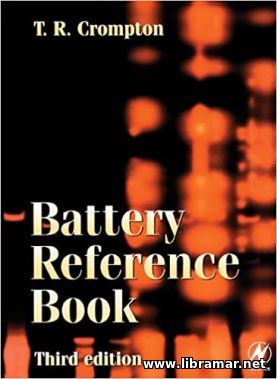 This is the third edition of one of the most popular and useful publications related to the batteries. Considering the incredibly fast and steady growth of the manufacturing industry, it is understandable why the interest and demand for the safe and efficient batteries has grown, correspondingly.
The author of this reference book has made a successful attempt to collect the technical information available today on the different battery types in a single volume, which would be of great practical use for the people dealing with the batteries in the course of their day to day work.
After the introduction, some good and easy to understand guidelines have been provided on how to select the battery, followed with the section on the characteristics of the commonly used batteries, from lead acid, nickel and silver batteries to mercury, lithium, manganese, water-activated and so many others – literally all of them are covered.
Then, the readers will proceed to the general theoretical essentials and design of the batteries, together with evaluation of their performance. The next section of the volume is devoted to the applications of the different type of batteries. After that, you will receive good tips on the charging of the batteries, as well as the primary battery suppliers.
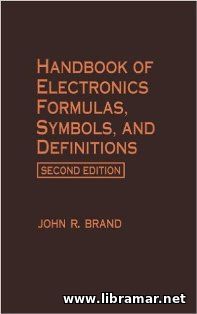 The book that we are now presenting to your attention has been specifically prepared by author, John R. Brand, for the industry engineers, as well as commercial operators, electricians, and even students and enthusiasts, i.e. for literally any person having some minimum knowledge of electrical terminology and some theory, and the declared ultimate intention was to provide them all with a comprehensive but compact and easy-to-use reference book containing all relevant technical info that they might require in their day-to-day activities or study, including schematic diagrams, approximations, symbols and formulas, all definitions required for today's active/passive analog circuit technology.
The way materials have been arranged in this publication allows readers to easily locate any desired formula without making it necessary to use the index. The publication contains sufficient technical information, approximations and schematic diagrams, various alternate methods and footnotes arranged in a very easy-to-use manner. The handbook will definitely be very useful to electrical engineers and future professionals since it could be used as a reference book, for the classroom training or for the self-study. All formulas that have been provided in this volume use only the basic units and are listed alphabetically.
 The present book was specifically prepared for students, practitioners and researchers in the fields of control engineering and marine technology. Taking into account that the audience would be fairly mixed, so much effort has been made by the author to set the proper level of the topic presentation.
Nevertheless, the readers of this book are required to have at least some basic knowledge in linear systems/state space models, say within the limits of one provided at the standard undergraduate control courses. The publication contains four major sections; the first three of them are dealing with the key components of a successful vessel motion control system, namely appropriate math models, proper understanding of the performance assessment, and knowledge of the basic limitations that may possibly affect the desired performance in a negative way. The last part of the book addresses the design of control systems.
Among the topics that have been included in the book there are ship dynamics, wave simulation and modeling, vessel motion performance, wave filtering, design of the control system for auto-pilots and for integrated rudder-fin stabilizer, roll stabilization devices, various models of actuators etc. The book will be useful to practicing marine engineers as well as the academic persons involved in the related research activities.
 The present volume is a great textbook on electrical engineering. Written by the team of recognized experts, the publication will provide readers with a truly comprehensive and detailed coverage of all basic technical concepts of the subject. The content of the book was compiled from the engineering perspective and the special accent was made on circuit functionality as well as on the applications.
The approach applied by the author allows the book to be recommended to the broad readership from students of electrical engineering and associated disciplines to the practicing engineers. The main declared goal of the authors was to teach students all important instruments they should understand and enable them to perform the analysis of different electrical systems and circuits. The second aim was to give readers a good reference tool.
Apart from the easily understandable explanations, the text of the book is full of figures and homework problems making the learning process go smoother. The book has become popular among students and engineers working in the various areas including marine and mechanical engineering, who have all appreciated the clear language and easy-to-follow explanations.
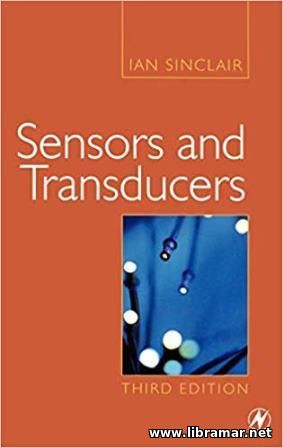 Here is one of the best available publications on sensors and transducers available at the market today. The present volume by Ian Sinclair was written to provide students, system designers and practicing technician engineers with the set of practical know-hows to be applied in their works. the author focuses on better understanding of the technology together with the practical application with not too much of mathematics.
His efforts have finally resulted in this highly readable and reader friendly textbook giving a truly unique introduction to both selection of the switches, transducers and sensors, and their practical application. Among the devices covered in the pages of this publication are heat and motion sensors, light sensors, non-signal switches and many others commo0nly used in various industries.
The readers have already appreciated the huge amount of useful information included by the author and perfect style of explanation; there are numerous data tables and informative diagrams contained in the book, making understanding of the subject even easier. The content of the publication will be particularly useful to less experienced people who can use it as an excellent introductory title.
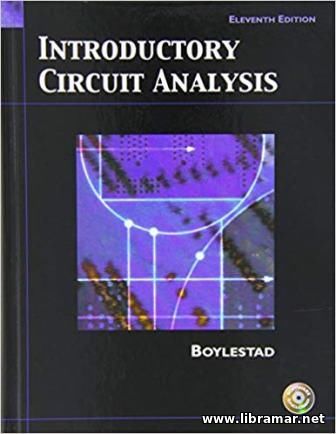 The main objective of the present revision of the publication was to address all the valuable comments provided by the readers as well as professional reviewers and also to deal with the ongoing industry trends. The newly added and thoroughly reworked information will help to expand the specific knowledge area. The content of the book was rearranged by the author to embed the new chapters and remove the material that was used less.
One of the features of this edition is that the author added the objectives to the beginning of each of the chapters. There are more than twenty chapters in the book, each chapter covering one important topic. The volume opens with the information about the current and voltage, resistance and Ohm’s Laws, series and parallel direct current circuits, different analysis methods, inductors and capacitors and magnetic circuits.
After that, we will proceed to the essential elements and phasors, alternating waveforms, and then power, resonance, network theorems and analysis methods as applied to the alternating current. The polyphase systems and transformers are covered in the separate chapters. An excellent reference and training source for the students and practicing electrician and engineers.
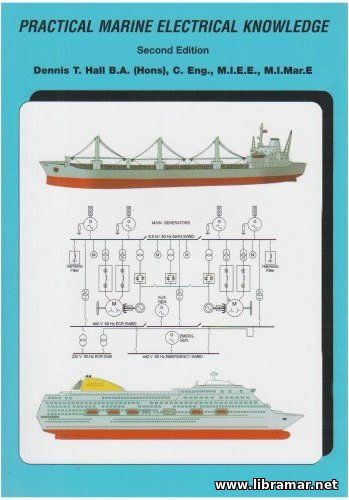 This popular publication is intended to describe all up-to-date electrical practices that have been employed in international shipping of today. The contents of this handbook was specifically designed to provide all required training support to the students. The specific intention of the authors was to assist the marine engineers and electrical officers in proper understanding of the shipboard electrical installations, equipment, systems and their maintenance.
The electrical power system of the vessel has been explained in terms of the main and emergency generation and distribution, including the matters of the electrical safety and associated safe working practices. The types of the faults occurring in the electrical circuits and their significant have been examined together with the different protection forms and methods. In addition to that, the book explains the construction of motors and starters as well as their operation and protection principles.
The title includes a surveys of the variable speed control methods for motors as applicable to the vessels. Moreover, the publication describes all electrical services for ships refrigeration installations, A/C, cathodic protection, lighting and various auxiliary equipment...
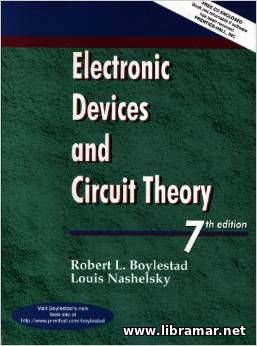 This publication is fully dedicated to the electronic devices and circuit theory; the intention of the author was to offer the students a thorough and comprehensive study of the subject topics. The material that has been provided in this publication will be of use for people willing to improve their technical knowledge and know hot to apply it to the day-to-day operations.
The authors of the book took a systems approach, covering the topics in a special fashion that allows to ensure students comprehend all fundamental aspects like transistors and diodes before they start with more advanced topics. The content of this textbook is mainly based on the semiconductor components. The authors of the book has explained to the readers what the diodes are and how they work, the reason of their function, their characteristics and many application circuits; the book is also intended to describe what the transistors are and shed some light on their most popular applications.
Moreover, the readers will know how to polarizate the transistors, and some other operations. They will get the necessary information on what the operational amplifiers, power amplifiers and oscillator circuits are. The book includes so many problems and illustrations for better understanding of the material...
|







